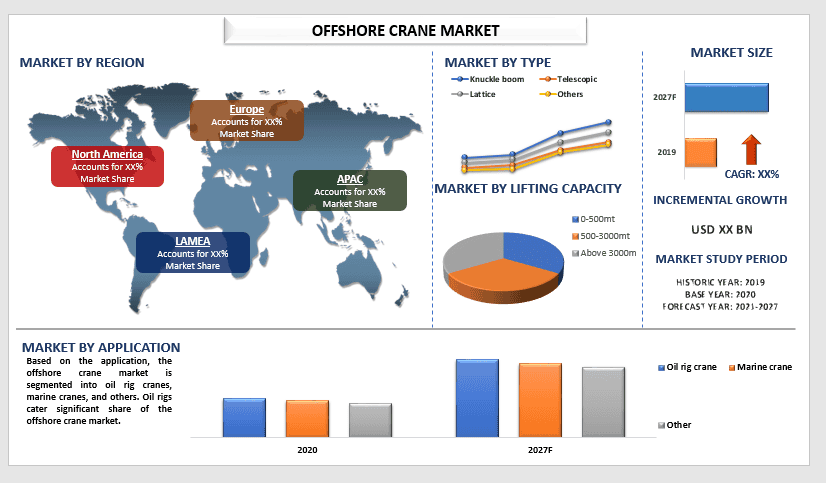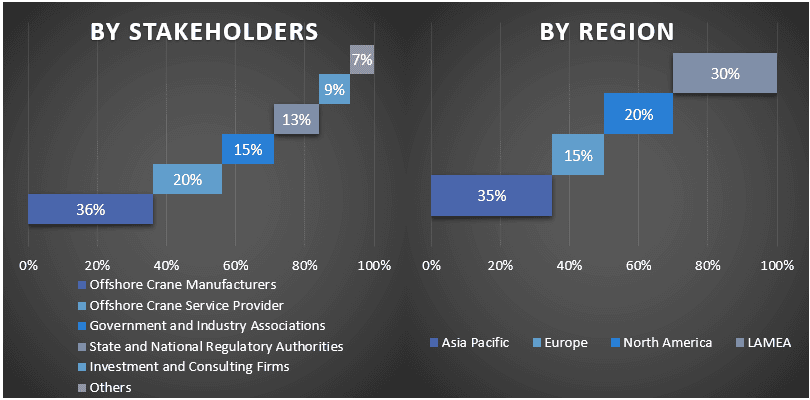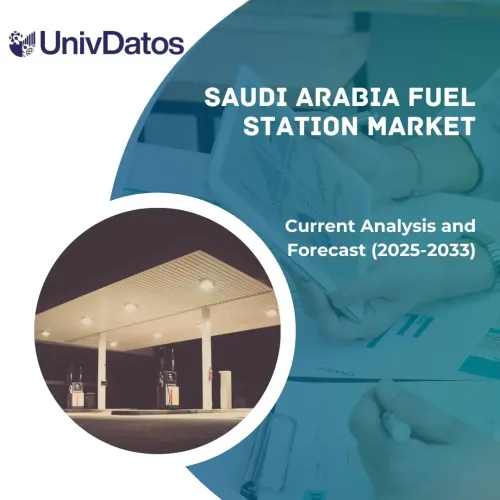
需求正在以显著的速度增长,预计在预测期内也将见证有影响力的增长。石油钻井平台的增加,以及钻井平台建造设备和建造船只的市场也将增加。因此,它将推动石油钻井平台上起重机的市场。这些因素预计将推动海上起重机市场的增长。此外,亚洲和非洲等新兴经济体石油勘探的增加也是该市场的主要驱动因素。
对安装风车以产生可再生能源的需求正在迅速增长。海上风车的安装有所增加,需要海上起重机来维护和运行涡轮机。海上风能研究部门正在得到各政府机构的加强,以产生更多的可再生能源。
全球海上起重机市场预计在 2021-2027 年期间将以超过 8% 的复合年增长率增长。 海上起重机被定义为一种安装在基座上的升降和旋转起重设备,用于将材料和人员转移到或从海运船只、驳船和结构。这些海上应用包括用于生产和钻井作业、船上应用和重型起重应用的底部支撑、浮动平台和船体船只。由于海底建设和石油勘测作业的增加,海上起重机需求正在以显著的速度增长,这正在全球范围内支持市场发展。
这些海底施工机器主要用于其在组装、维修和石油和天然气移除系统供应等重型作业中的高精度。此外,对可再生能源日益增长的需求正在支持海上起重机在海上环境中建造和制造大型风力涡轮机的使用,从而扩大了海上起重机市场的市场规模。
报告中提出的见解
“基于类型, 在2020年,折臂式细分市场占据了市场的大部分份额”
根据类型,海上起重机市场分为折臂式、伸缩式、桁架式和其他。折臂式细分市场占据了海上起重机市场的很大份额,预计在预测期内也将见证有影响力的增长。这主要是由于它们的强度和灵活性,因为这些起重机具有更高的稳定性和易于操作,这反过来又增加了其在行业中的需求。
“在应用中,预计石油钻井平台细分市场在预测期内将见证最高的复合年增长率”
根据应用,海上起重机市场分为石油钻井平台起重机、船用起重机和其他。石油钻井平台占据了海上起重机市场的很大份额。这主要是由于全球范围内不断增长的海上勘探与生产活动将增加对石油钻井平台的需求。此外,随着石油钻井平台的增加,钻井平台建造设备和建造船只的市场也将增加,这反过来将推动石油钻井平台上起重机的市场
“亚太地区预计在预测期内将见证显著增长”
亚太地区预计将在海上起重机市场中占据广泛的份额,并且预计在预测期内也将以有影响力的速度增长。该地区对石油和天然气以及海上可再生能源的需求不断增长等因素预计将获得相当大的动力。此外,该地区石油勘探的增加以及在中国、印度、尼日利亚、安哥拉、加纳和赤道几内亚等国的资本支出增加。肯尼亚、坦桑尼亚和莫桑比克也为预测期内的石油运营商提供了令人兴奋的市场机会。
此外,政府和私营部门在制造新的海上风电场以大量生产可再生能源方面的支出不断增长,将使该地区对具有重型起重能力的海上起重机产生巨大需求。例如:澳大利亚政府计划在未来几年内建造新的海上风电场,为全球市场前景提供有利可图的机会。
购买本报告的理由:
- 该研究包括经过认证的关键行业专家验证的市场规模和预测分析。
- 该报告以一目了然的方式快速回顾了整体行业表现。
- 该报告深入分析了主要的行业同行,主要关注关键业务财务、产品组合、扩张战略和最新发展。
- 详细检查行业中存在的驱动因素、限制因素、主要趋势和机遇。
- 该研究全面涵盖了跨不同细分市场的市场。
- 深入的行业区域层面分析。
定制选项:
全球海上起重机市场可以根据需求或任何其他细分市场进一步定制。此外,UMI 了解您可能有自己的业务需求,因此请随时与我们联系以获取完全符合您要求的报告。
目录
全球海上起重机市场分析 (2021-2027) 的研究方法
分析历史市场、估计当前市场和预测全球海上起重机市场的未来市场是创建和分析全球主要地区海上起重机采用情况的三个主要步骤。进行了详尽的二级研究,以收集历史市场数据并估计当前市场规模。其次,为了验证这些见解,考虑了许多发现和假设。此外,还与全球海上起重机市场价值链中的行业专家进行了详尽的初步访谈。通过初步访谈对市场数据进行假设和验证后,我们采用了自上而下/自下而上的方法来预测完整的市场规模。此后,采用市场细分和数据三角剖分方法来估计和分析行业相关细分市场和子细分市场的市场规模。详细方法如下所述:
历史市场规模分析
步骤 1:深入研究二级来源:
进行了详细的二级研究,通过公司内部来源(例如年度报告和财务报表、业绩演示文稿、新闻稿等)以及外部来源(包括期刊、新闻和文章、政府出版物、竞争对手出版物、行业报告、第三方数据库和其他可靠出版物)来获得海上起重机市场的历史市场规模。
步骤 2:市场细分:
在获得海上起重机市场的历史市场规模后,我们进行了详细的二级分析,以收集主要地区不同细分市场和子细分市场的历史市场洞察和份额。报告中包含的主要细分市场包括类型、起重能力和应用。此外,还进行了国家/地区层面的分析,以评估该地区测试模型的总体采用情况。
步骤 3:因素分析:
在获得不同细分市场和子细分市场的历史市场规模后,我们进行了详细的因素分析,以估计海上起重机市场的当前市场规模。此外,我们使用因变量和自变量(例如新兴经济体中石油发现的增加)进行了因素分析。考虑到全球海上起重机市场领域的顶级合作、并购、业务扩张和产品发布,对需求和供应侧情景进行了透彻的分析。
当前市场规模估计和预测
当前市场规模:根据上述 3 个步骤的可操作见解,我们得出了当前市场规模、全球海上起重机市场的关键参与者以及细分市场的市场份额。所有必需的百分比份额拆分和市场细分均使用上述二级方法确定,并通过初步访谈进行验证。
估计和预测:对于市场估计和预测,权重被分配给不同的因素,包括驱动因素和趋势、制约因素以及利益相关者可获得的机会。在分析了这些因素后,应用了相关的预测技术,即自上而下/自下而上的方法,以得出关于 2027 年全球主要市场不同细分市场和子细分市场的市场预测。用于估计市场规模的研究方法包括:
- 该行业的市场规模,以收入(美元)衡量,以及国内主要市场海上起重机市场的采用率
- 所有百分比份额、拆分以及细分市场和子细分市场的细分
- 全球海上起重机市场的关键参与者,包括类型、起重能力和应用。此外,这些参与者为在快速增长的市场中竞争而采取的增长策略
市场规模和份额验证
初步研究:与主要地区的关键意见领袖 (KOL) 进行了深入访谈,包括高层管理人员(CXO/VP、销售主管、营销主管、运营主管、区域主管、国家主管等)。然后对初步研究结果进行总结,并进行统计分析以证明所述假设。初步研究的输入与二级研究结果合并,从而将信息转化为可操作的见解。
不同地区的主要参与者细分

市场工程
采用数据三角剖分技术来完成整体市场估计,并得出全球海上起重机市场每个细分市场和子细分市场的精确统计数字。在研究了全球海上起重机市场的类型、起重能力和应用中的各种参数和趋势后,将数据拆分为多个细分市场和子细分市场。
全球海上起重机市场研究的主要目标
该研究指出了全球海上起重机市场的当前和未来市场趋势。投资者可以获得战略见解,以根据研究中进行的定性和定量分析来决定投资。当前和未来的市场趋势决定了区域层面市场的整体吸引力,为行业参与者提供了一个利用未开发市场并从先行者优势中受益的平台。研究的其他定量目标包括:
- 分析海上起重机市场当前和预测的市场规模,以价值(美元)衡量。此外,分析不同细分市场和子细分市场当前和预测的市场规模
- 研究中的细分市场包括类型、起重能力和应用领域。
- 定义和分析海上起重机市场行业的监管框架。
- 分析涉及各种中介机构的价值链,并分析行业的客户和竞争对手行为。
- 分析主要地区海上起重机市场当前和预测的市场规模。
- 报告中研究的主要国家/地区包括亚太地区、欧洲、北美、LAMEA 和世界其他地区。
- 海上起重机市场的公司概况以及市场参与者为在快速增长的市场中保持竞争力而采取的增长战略
- 对该行业进行深入的区域层面分析
相关 报告
购买此商品的客户也购买了










